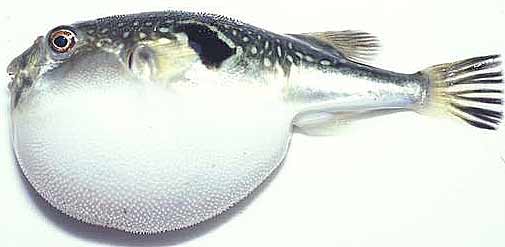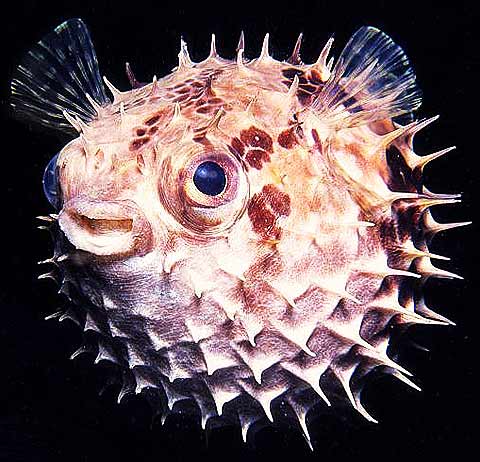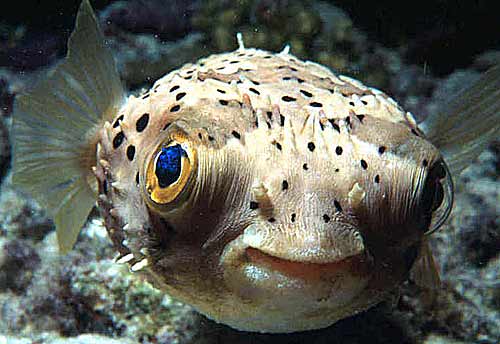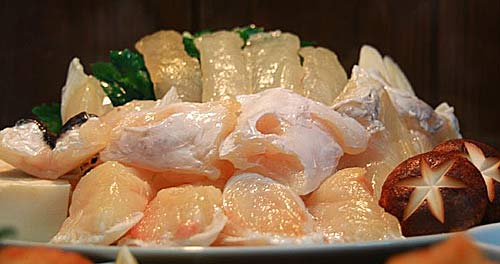Pufferfish, Blowfish, Fugu – Poison Sushi?

The pufferfish is also called balloonfish or blowfish and in Japan – fugu. These fish puff their bodies into big balloon balls with either water or air. They are cultivated in cages in the sea, off the coast of Japan, where certain species of pufferfishes are considered a delicacy. The fugu contains a deadly poison. Somehow this adds to the attraction for fugu eaters. The fugu has a pleasant smiling face and this puffing behavior is interesting but the real story here is about the people who eat it.

The spiky puffer is the porcupinefish
The Fugu Market
Early records, since the the time of the Meiji ruling class in Japan (1868–1912), show prohibitions and restrictions limiting the sale of fugu. Only licensed chefs can prepare this fish as it is necessary to remove the ovaries and liver where the poison resides. It is the most poisonous fish in the world. A lethal dose is only one milligram. That is a very tiny amount that can fit on a pinhead. A typical mature fugu contains thirty times that amount. The poison acts by blocking sodium channels in nerve tissues, paralyzing muscles and causing eventual respiratory arrest. No antidote exists, but fisherman lore says that burying the victim up to his or her head with sand will reverse the poison’s course. Hmm, not sure I would want to try that.

In spite of this hazard, connoisseurs enjoy fugu prepared as sashimi. It is a white fish, usually sliced in paper-thin translucent wafers and eaten in soups or arranged on a platter in the shape of a flying crane, the symbol of longevity. It is frequently served with ponzu, a mixture of citrus juice and soy sauce. Some daring eaters like to include a tiny dot of the liver as they eat it, savoring the “high” of the numbness just short of dangerous amounts, although no licensed chef would prepare it this way. Besides Japan, it is also eaten in Korea and a few other countries in Southeast Asia.

Looks good? worth the risk?
Winter is the best time to eat fugu, when its flavor is most delicate. The price is the highest between October and March. A fugu meal at a good restaurant might cost around $200. In Shimonoseki, known as “fugu city,” 80 percent of Japan’s fugu catch is sold. Fisherman have made up to $100,000 in one hour at the fish auction there. The price of the fugu is said to be an indicator of the state of the economy.
